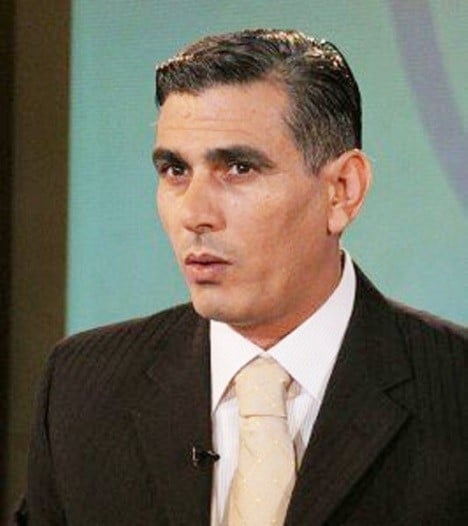In a December 18, 2017 article Nasser Al-Laham, the editor-in-chief of the Palestinian Maan News Agency and director of the Lebanese Mayadeen channel in the Palestinian Authority (PA), explains why, despite the high political awareness among the Palestinian people, and despite its understanding of the threat faced by Jerusalem, the turnout for demonstrations against Trump's recognition of Jerusalem as Israel's capital is so low. Al-Laham explains that some of the reasons for this are a lack of agreement among the Palestinian factions as to how to proceed and a lack of a political slogan around which they can unite; he adds that the Palestinians are waiting to see where the Palestinian diplomatic campaign will lead and what the decisions of the Palestinian leadership will be in this context.

Nasser Al-Laham (Source: paltoday.pas, January 26, 2015)
The following are translated excerpts from his article:[1]
"The Palestinian people have sufficient political awareness to understand the extent of the danger posed to the occupied capital… There is significant escalation of the popular struggle and [people are] coming out against the satanic Zionist plans for Jerusalem and the Al-Aqsa Mosque. Unlike in past years, hardly a day goes by without an intifada on the ground and the occupation conducting nighttime arrest operations to halt the advance of an entire generation toward the final campaign of national liberation. [However,] there is a decrease in the number of demonstrators, and these are the reasons why:
- They are waiting for the decisions of the Palestinian leadership, in order to understand what direction it will take and how far it will go with its struggle. This, because in previous attempts when the public acted with full force, this was at odds with the decisions of the leadership, which took into consideration the interests of [the different] countries. The moment the public understands that the leadership is continuing with the intifada – and this necessitates at least two months [of popular resistance] – it will immediately go farther than all the intelligence [mechanisms] in the region currently imagine.
-
Exam time at educational institutions, [relevant] because most of the demonstrators in the streets are school or university students. The Palestinian people's devotion to knowledge and its commitment to education are so well known that, during the first intifada, the 1987 Intifada of Stones, the united leadership organized the educational system and the matriculation exams in such a way… that the schools were closed.
-
They are waiting for the results of the diplomatic campaign that is [currently] the PA's main focus. The Palestinians are curious to see the results of the international vote on the proposal.[2]
-
Minimal participation of [the different Palestinian] factions and forces [involved in the resistance], due to an absence of agreement about a [unifying] political slogan, as each faction operates separately, according to its own political doctrine. [At the same time,] it should be noted that the Gaza Strip exceeded all the regions in this regard, since the forces there have overcome [their] disagreement and are now close to [finding] a joint slogan and position.
-
[The absence of] agreement about the means of action – the picture [in this context] is still unclear. In the 1987 intifada stones were used, since this was useful against the settlers and their cars and made their lives hell. During the intifada in the year 2000, guns were used. However [the choice of weapon] for the present struggle is not yet clear, and so, the meaning of the popular resistance that the leadership is calling for is still not clear to the public, and may not be clear [even] to the leadership itself."
[1] Maannews.net, December 18, 2017.
[2] The reference is to the draft proposal rejecting the U.S. recognition of Jerusalem as the capital of Israel, which was approved by the UN General Assembly with 128 votes in favor, nine against, and 35 abstentions. This was considered a great victory for the PA, but despite it the number of participants in demonstrations did not rise. For more information, see theguardian.com, December 21, 2017.





